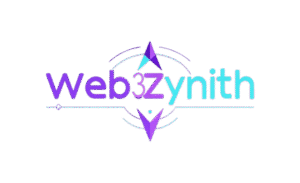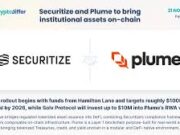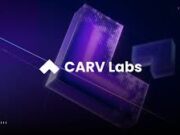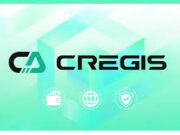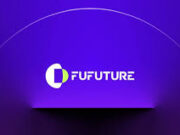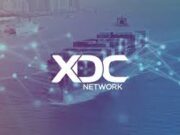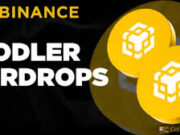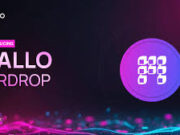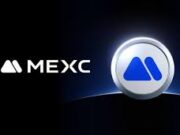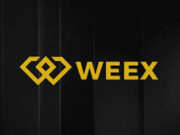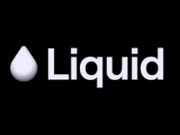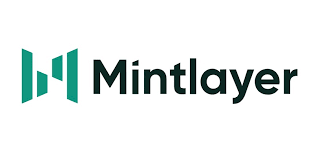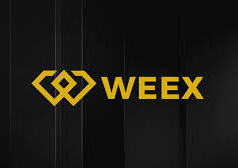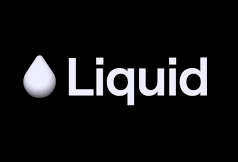Bitcoin, the pioneer of cryptocurrencies, has long been recognized as a secure store of value. Yet its participation in decentralized finance (DeFi) has been limited, mainly relying on wrapped tokens or centralized bridges—methods that often compromise security and decentralization. Enter Mintlayer, a Bitcoin Layer 2 sidechain aiming to change that narrative.
On January 15, 2025, Mintlayer officially launched Version 1.0.0, introducing native Bitcoin cross-chain swaps and real yield opportunities through tokenized real-world assets (RWAs). This milestone, announced on Mintlayer’s official X account, eliminates middlemen, strengthens Bitcoin’s role in DeFi, and places security and sovereignty at the forefront.
Unlocking Bitcoin’s Potential: Native Swaps Explained
Mintlayer’s native Bitcoin swaps are powered by Atomic Swaps, which allow direct, trustless exchanges of Bitcoin for tokenized assets on its platform. Unlike decentralized exchanges (DEXs) that rely on liquidity pools or centralized custodians, Atomic Swaps leverage Hashed Time Lock Contracts (HTLCs). These contracts lock funds in escrow and require cryptographic proof to complete the transaction. If the swap isn’t executed, funds automatically return to their owners—removing counterparty risk (Bitcoin Insider).
This model avoids the pitfalls of wrapped Bitcoin (wBTC) and centralized bridges, both of which have been frequent targets for exploits. In fact, bridge hacks alone drained $1.3 billion in 2022, with incidents like the $615 million Ronin hack highlighting systemic vulnerabilities (U.Today).
By enabling 1:1 swaps of native Bitcoin for assets such as stablecoins or security tokens, Mintlayer provides a secure and seamless trading experience. As Charlie Shrem, Bitcoin Foundation advisor, noted: “Mintlayer Atomic Swaps are a new chapter in blockchain evolution.”
Real Yield from Real-World Assets
While swaps unlock Bitcoin’s liquidity, Mintlayer’s tokenized RWA ecosystem may prove even more transformative. Tokenization allows real-world assets—such as real estate, government bonds, and commodities—to be represented as blockchain-based tokens. Mintlayer supports this through its MLS-01 (fungible) and MLS-03 (non-fungible) token standards, which include compliance features like Access Control Lists (ACLs) for whitelisting and blacklisting addresses (CoinTelegraph).
Crucially, Mintlayer emphasizes real yield—returns generated from the actual performance of assets, not from inflationary token incentives. For example, Interest.One, a Mintlayer partner, connects Bitcoin holders to tokenized bonds and real estate, allowing them to earn yield without relinquishing custody. This sets Mintlayer apart from many DeFi platforms that offer unsustainable reward-based yields.
With global DeFi assets surpassing $330 billion, Mintlayer’s entry into the RWA space positions it well to attract institutional players who demand both security and compliance (Mintlayer.com).
How Mintlayer Works: A Bitcoin-Centric Design
Mintlayer’s architecture is designed to strengthen Bitcoin’s role in DeFi while minimizing trade-offs. It operates as a Layer 2 sidechain anchored to the Bitcoin blockchain for security. Its consensus mechanism, Dynamic Slot Allotment (DSA), blends Proof-of-Stake (PoS) and Proof-of-Work (PoW), enabling nodes to run on low-cost hardware such as a $50 Raspberry Pi (CoinTelegraph).
The platform integrates seamlessly with the Bitcoin Lightning Network, supporting near-instant “Lightning swaps” for improved scalability. Unlike Ethereum-style smart contracts, Mintlayer employs non-Turing-complete contracts, inspired by Bitcoin Script, which prioritize security by reducing vulnerabilities.
Additionally, Mintlayer allows transaction fees to be paid in any supported token—a departure from the rigid gas-fee systems of other blockchains. With 18 million ML tokens already staked and 236 validators, Mintlayer demonstrates healthy community engagement (Mintlayer.org).
The Significance of Trustless DeFi
Mintlayer’s model addresses two key DeFi pain points: trust and accessibility. Centralized exchanges introduce custodial risks, while wrapped tokens and bridges expose users to systemic vulnerabilities. By enabling native Bitcoin swaps, Mintlayer provides a path to decentralized trading without sacrificing security (Bitcoin Insider).
The RWA opportunity is equally significant. According to Boston Consulting Group, tokenized assets could reach $16 trillion by 2030. Mintlayer’s SaaS platform, now in testnet, helps institutions bring RWAs on-chain with compliance-ready tools. Partnerships such as Kylix (for Bitcoin lending) and Forint Finance (for cross-chain DEX integration) further expand its ecosystem (Mintlayer.org).
Challenges to Overcome
Despite its innovations, Mintlayer faces hurdles:
- Liquidity Constraints: HTLC-based swaps require both parties online, which could reduce activity in thinly traded markets.
- Regulatory Scrutiny: Tokenized securities must adhere to local financial regulations, and Mintlayer’s compliance tools won’t solve global inconsistencies.
- Token Volatility: The ML token trades at around $0.03099 (October 2024), far below its all-time high of $0.99. With 400 million tokens in circulation, vesting schedules could put downward pressure on prices (CoinMarketCap).
- Scalability Risks: While low node requirements encourage participation, they may strain infrastructure if validator demand grows faster than network optimization.
Driving Bitcoin DeFi Forward
Mintlayer’s roadmap includes ambitious upgrades. The upcoming ZK Thunder Network (Layer 3) will introduce EVM-compatible smart contracts and one-second settlements. The Token Factory, now in testing, aims to streamline RWA token creation, while a $4 million Ecosystem Grants Program is fostering developer adoption (Mintlayer.org).
The Mojito Wallet, supporting both Bitcoin and ML tokens, already has thousands of users, while listings on exchanges like Gate.io ensure liquidity. Partnerships with Salus and Metaverse 4 Finance hint at further ecosystem growth.
A Vision for the Future
Mintlayer is more than just another blockchain project—it’s a bid to redefine Bitcoin’s role in global finance. By enabling native swaps and yield from tokenized assets, it marries Bitcoin’s unmatched security with DeFi’s flexibility. Users can now trade BTC for tokenized real estate or bonds without centralized intermediaries, aligning perfectly with crypto’s ethos of sovereignty.
For individuals, this means new income streams without selling Bitcoin. For institutions, it offers a compliant, transparent entry point into tokenized finance. As one X user commented: “Mintlayer’s Atomic Swaps make manual transactions feel like ancient tech.”
If successful, Mintlayer could bridge Bitcoin’s $1.2 trillion market cap with the burgeoning DeFi sector, making BTC a true player in decentralized finance.
Final Takeaway
Mintlayer’s launch of native Bitcoin swaps and RWA-driven real yield marks a pivotal moment in Bitcoin DeFi. Its commitment to security, compliance, and accessibility positions it as a leading alternative to risky wrapped tokens and centralized bridges. Challenges remain—particularly regulatory clarity and token price volatility—but Mintlayer’s progress shows it is serious about making Bitcoin more than just “digital gold.”
Sources
- Mintlayer.org: Native BTC Cross-Chain Swaps Come to Mainnet
- U.Today: Mintlayer’s V1.0 Release
- CoinTelegraph: Mintlayer Mainnet Launch
- Bitcoin Insider: Cross-Chain Atomic Swaps
- Mintlayer.org: Year-End Development Recap
- CoinMarketCap: Mintlayer Token Data
- CryptoRank.io: Mintlayer ICO and Tokenomics
- Boston Consulting Group: Tokenized Assets Growth Report
